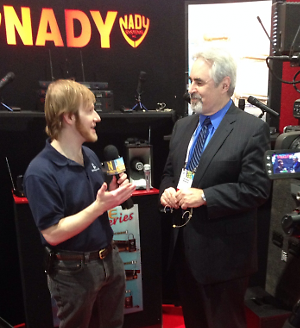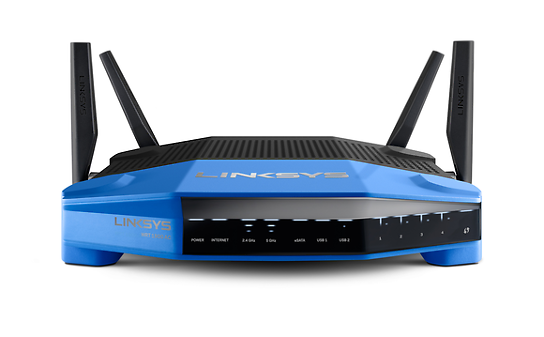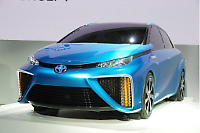A court decision this week has a lot of people concerned about whether net neutrality is dead. I’m pretty concerned as well. This whole situation got me thinking about the issue of net neutrality. A lot of people don’t understand what net neutrality is, so let’s talk about that.
Think of net neutrality this way, the interstate highway system, believe it or not, was originally set up to provide the federal government open lanes for military equipment to be transported within the country in case of an attack from the outside that required us to defend our cities. I know this sounds crazy to most folks, who drive our interstate highway system, and don’t think the thing about the military aspect. Some might say, that the military side of this equation was put in place to justify the expense of creating a large interstate highway system. And, there may be some truth to that! Politicians are experts at coming up with ways to justify getting large amounts of money for pet projects! But, putting that aside, I think we can all agree that the interstate highway system has been a benefit to the citizens of the United States. Why? Because when it’s time for you to travel on your vacation, let’s say to Disney World in Florida, you don’t think anything about jumping in your car and simply driving south! You have nice, open, highways that are convenient and allow you to travel inexpensively without paying any tolls.
Now, there are highways within our country that are privately developed and privately owned, and the owners of these roads charge a toll. The idea is that toll roads provide high quality roads that quickly connect things from “Point A” to “Point B.” And, since they are privately owned, or in some way subsidized by a private entity, we should pay them for developing the road. And, that’s fine, if I choose to use a toll road, for convenience sake, that’s my choice, and I can spend my money to do so. However, it’s nice to be able to use the Federal Interstate Highway System to go from that same “Point A” to “Point B,” perhaps having to go a little further around, in some situations; but by using it I have the option of a free trip (not counting wear and tear on my car… and gas prices, of course!)
So, why all this talk about interstate highways? Well, the Internet has been called the “Information Superhighway.” And, indirectly, that’s why Al Gore once claimed to have “taken the initiative to create the Internet.” You see, his father was instrumental in creating the Federal Interstate Highway System. He championed it. Al Gore, in somewhat the same way, was actually claiming to have championed the “Information Superhighway,” which we call the Internet. Now, he stuck his foot in his mouth, when he made the statement, “that he took the initiative to create the Internet.” I don’t believe his father would have claimed to have created superhighways. But, I might be wrong! The point is, that the Federal Government did create the superhighway system, and anyone of us can use it freely! In the same way, the Internet is open for all to use and “drive on” as we see fit. No one is charging us extra for using a certain part of the Internet while not using another part of the Internet. It is all free and open.
If I want to create a website, or service, and use the Internet to deliver it, that’s my business. I don’t have to pay anybody anymore than anyone else to put my business, or video, or audio, or website… whatever, on the Internet! This concept is the essence of net neutrality. That the Internet should be free and open for all to use just like the superhighway system of the United States is open for anyone to drive their car, or truck; and in the process, perhaps even make money, such as truck drivers do today on our highways.
So, this is the reason that I’m for net neutrality. I hope this recent court case won’t stop the innovation, the creativity, and openness, of our “Information Superhighway!” That would be tragic and it would restrict not just the flow of of ideas, but the innovation that I’m sure will continue as our linked information society continues to innovate in the Internet space!
 This week Google started working on a smart contact lens that monitors glucose levels within the wearer’s human tears, or more precisely, the moisture on your eye. The idea being that wearers of contact lenses which also happen to be diabetics, can monitor their blood sugar at all times. An interesting idea, but is it practical?
This week Google started working on a smart contact lens that monitors glucose levels within the wearer’s human tears, or more precisely, the moisture on your eye. The idea being that wearers of contact lenses which also happen to be diabetics, can monitor their blood sugar at all times. An interesting idea, but is it practical?


 Pictured at right is Daniel J. Lewis of “
Pictured at right is Daniel J. Lewis of “ I love this! Open Source based right out of the box!
I love this! Open Source based right out of the box! Okay, we all want really cool electric cars! Well, we do! At least I do! And, at this year’s CES Toyota announced a new hydrogen powered electric car that looks really cool. Plus, it was announced that this car will be available in 2015. Yes, that is future, but not distant future! So, that means before too long we will actually be able to drive a 300 mile range electric car powered by hydrogen fuel cells that is actually practical. Of course, what will make it more practical, is having fuel stations to buy the hydrogen that powers the fuel cell that makes the car work. Hopefully this will happen over time. California has an initiative to spend $200 million installing hydrogen stations throughout the state, starting in Southern California and expanding from there. Whether other states will get on board with this initiative remains to be seen.
Okay, we all want really cool electric cars! Well, we do! At least I do! And, at this year’s CES Toyota announced a new hydrogen powered electric car that looks really cool. Plus, it was announced that this car will be available in 2015. Yes, that is future, but not distant future! So, that means before too long we will actually be able to drive a 300 mile range electric car powered by hydrogen fuel cells that is actually practical. Of course, what will make it more practical, is having fuel stations to buy the hydrogen that powers the fuel cell that makes the car work. Hopefully this will happen over time. California has an initiative to spend $200 million installing hydrogen stations throughout the state, starting in Southern California and expanding from there. Whether other states will get on board with this initiative remains to be seen.